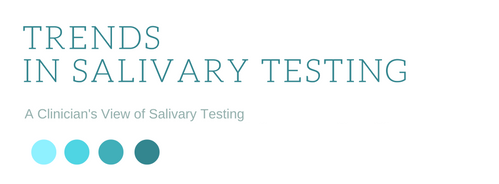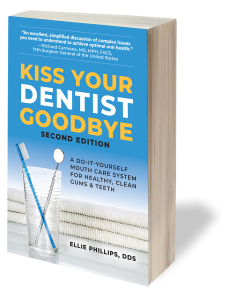Mouthwash is a bedrock of oral hygiene. So why do some say it harms the mouth? The answer is a mix of misunderstanding and bad headlines.
The Human Microbiome Project of 2007 illustrated the mouth is home to hundreds of previously unrecognized good bacteria. Dentists used to call plaque “biofilm,” but plaque is a biofilm infection, and healthy biofilm is protective and the goal of good oral care. Studies show 40% of adult biofilm develops in childhood, which illustrates the tenacity of biofilm and challenges any idea “mouthrinse” could damage it. So, how did this wrong information become news?
- Specificity: Any liquid “washes” the mouth, so if we discuss “mouthwash” we must be specific:
-
-
-
- Chlorhexidine is a hospital-grade antiseptic
- Listerine is an essential oil (EO) rinse (often wrongly confused with chlorhexidine)
- ACT is dilute (0.05%) sodium fluoride
- Scope contains Cetylpyridinium Chloride (CPC)
-
-
- Misunderstanding:
-
-
- Studies claim blood pressure is affected by “mouthwash,” yet our mouths are washed as any liquid enters our mouth, mixes with saliva and collects twenty percent (20%) of the mouth’s (planktonic) bacteria. Some liquids are swallowed (as a drink) others expectorated.
- Mouth “washing” occurs at every meal, when we clean our teeth, or have a drink – even water. The loss of planktonic bacteria is quickly reversed, since eighty percent (80%) of bacteria are safely housed in resilient oral biofilm that does not get washed away.
- It takes 60-90 minutes to re-establish bacterial levels, which means that any bacterial or nitric oxide testing should occur 60-90 minutes after rinsing, drinking, eating, or even a cup of water.
-
- Nitric Oxide: Sickly, older adults do not generate nitric oxide throughout their body as young people, so the production of nitric oxide in the mouth may be more important with age. Surface tongue bacteria are involved in this, and they can be depleted in vulnerable individuals by Chlorhexidine. Depletion of nitric oxide can create negative systemic consequences for the heart, breathing, blood pressure, and brain health.
- Chlorhexidine is a strong antiseptic which eliminates surface bacteria from biofilm. This is why chlorhexidine is used to disinfect hospital intubation tubes and kill surface mouth bacteria–including on the tongue (where nitric oxide is generated). This explains why Chlorhexidine can raise blood pressure and make breathing more difficult, especially in sick and elderly individuals. When these studies were reported, media headlines took the word “antiseptic” and used an image of Listerine. This is how the myth about Listerine was wrongly generated.
- Listerine’s active ingredients are essential oils, with mild effects on planktonic bacteria and eucalyptus to stimulate gum growth. (These oils are dissolved in less than 25% ethanol, and it requires 40-80% ethanol to affect bacterial function). Listerine targets Streptococcus mutans that “cause” plaque problems. Thymol and menthol have no effect on biofilm, yet wrong stories are promoted by competitors.
- A healthy diet, xylitol (to modulate biofilm), periods of mouth resting for 90 minutes after meals, and a good oral care routine, help to create an optimal bacterial balance.
- To test bacteria and nitric oxide levels – I recommend OralDNA®’s resources, and nitric oxide strips from Berkeley Life, available at DrEllie.com: https://zellies.com/collections/oral-health/products/berkeley-life-nitric-oxide-test-strips
Dr. Ellie has done it again! In her second edition of Kiss Your Dentist Goodbye, available for order now, Dr. Ellie Phillips dives deeper into the science behind oral health and the essential balance of the oral microbiome. With theories rooted in groundbreaking research, she explains how to achieve complete oral health, eliminate pain and discomfort, and avoid unnecessary dental treatments—all from the comfort of your home. Empower yourself with the knowledge to navigate oral care confidently and debunk common misconceptions, like the ones surrounding mouthwash. Visit DrEllie.com to learn more and get your copy today!
References
A comparison of mouthwash on oral nitric oxide production:
https://www.sciencedirect.com/science/article/abs/pii/S1089860316300027?via%3Dihub
Chlorhexidine study – with a Listerine image:
The antiseptic is Chlorhexidine
https://academic.oup.com/ajh/article/28/5/572/174874
- The Trouble with Mouthwash - January 31, 2025
- Flower Power: A Less Aggressive Approach - May 3, 2019


